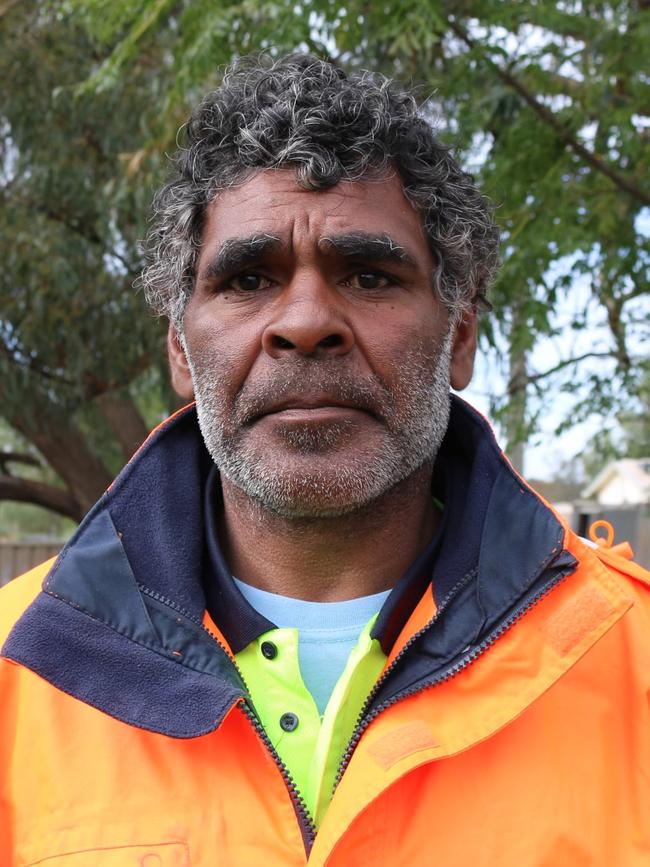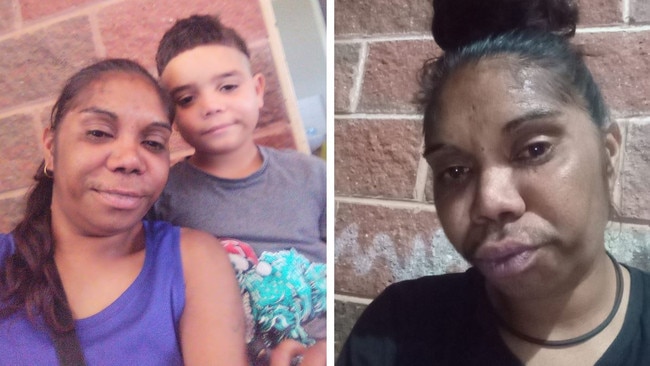Dying Rose: Lasonya Dutton’s body was found in the backyard being eaten by dogs – her family is convinced she was murdered
Police believe Lasonya Dutton took her own life and her body lay just metres from her home for four days before anyone noticed. But her family has a much more sinister theory.
Dying Rose
Don't miss out on the headlines from Dying Rose. Followed categories will be added to My News.
When Barkindji man Merle Dutton walked through the backyard of his mother’s Wilcannia home in late March last year, nothing could have prepared him for the grim discovery that awaited him.
“I looked and I spotted a dog chewing on what I thought was a kangaroo, but it wasn’t a kangaroo,” Merle said.
What Merle found was so shocking it was almost inconceivable.
“I didn’t think anything of it until I got up a bit closer, then I realised it was a human being. I just ran out screaming and screaming.”
It was the decomposed body of Merle’s 31-year-old niece and mother-of-two, Lasonya Dutton, who had not been seen or heard from in four days.
She was lying in plain sight, just four metres from the family’s kitchen window in the remote NSW town of Wilcannia.
Lasonya is one of six Aboriginal women whose stories are being investigated by The Advertiser in Dying Rose, a podcast in which their families question whether they were murdered and whether police properly responded to their deaths.
Aboriginal and Torres Strait Islander readers are advised that this story contains images and voices of people who have died.
DYING ROSE: LISTEN TO EPISODES 1 & 2
PODCAST: Listen to the first two episodes here, or find them on the Apple Podcasts app
Lasonya’s mysterious death sent shockwaves through the tiny community.
Her father, Keith Dutton, has spent more than a year fighting for answers from police and asking how his daughter could possibly have been there for so long without her family seeing her.
“The house was like a drop-in centre, there was people dropping in here all the time … there’s no way in the world my daughter was lying there for what – Saturday, Sunday, Monday, Tuesday? Come on,” he said.
“I know my daughter would not have harmed herself. Sonya was a mother of two who loved life.
“I‘m horrified, to be honest with you. My family knows, and half of Wilcannia knows … I’m ready to explode.”

Keith believes that, within hours of arriving at the horrifying scene, police ruled Lasonya’s death to be suicide.
Police said she was found with an electrical cable wrapped around her neck which they believed was used to hang herself from a fence post, just a metre-and-a-half high.
But Keith has never believed this theory. He began conducting his own investigation – asking those in the tight-knit town about his daughter’s final days.
Keith learned that on the Friday before her body was found, two young boys saw her walking with a man. He also heard further rumours of locals seeing her being assaulted by someone that same night.
Neighbour Ingrid Bugmy, who lives across the road from the Duttons’ house, said she saw two people appearing like they “wanted to get in” to Lasonya’s home on the night before her body was found. This was two days after she was last seen.
“I just thought it was just strange. It was really strange for me for someone to stand on that side of that window … and then the next day they find a body there,” she said.
Keith said he also heard a bloody knife had been found at the town’s oval, but this was never investigated.


Behind the Duttons’ home was an unlit alleyway that stretched for more than a kilometre, with access to the backyards of residents’ houses.
Keith believes that two people known to Lasonya could have killed her and used a pram to transport her body down the alleyway, hiding her in the darkness of night.
He said they could have attempted to place her body inside her house but, when they could not get in, staged the scene in the backyard to make it look like a suicide.
He attempted to present this theory and the information he had gathered to police, but said officers “didn’t want to hear it”.
The only time NSW Police spoke to Lasonya’s uncle Merle, who found her body, was “when they asked him to leave” the home following the discovery of her body. No formal statement was ever taken.
“I never knew what the police had against me or my family or my daughter,” Keith said.
“I can’t seem to come up with any other explanation – and police don’t seem to be coming up with anything to help me. What am I supposed to think?”

Quest for answers
It was almost a year after Lasonya’s death that Keith finally received a copy of her autopsy report, but the document only caused more upset and confusion for her family.
In the report, it was revealed the coroner “could not rule out third-party involvement” in Lasonya’s death and deemed the circumstances of her death to be suspicious.
Her final cause of death was found to be “unascertained”, but NSW Police claimed they had conducted a proper investigation – a statement that left Keith baffled.
“Me and my family believe that she has been murdered. In that autopsy report, it states that you can’t exclude a third party and it goes on to say that it was thoroughly investigated.
“I don‘t know how the police come to the conclusion that a full investigation has been done.”

The Advertiser contacted NSW Police regarding their investigation of Lasonya’s death and outlined a list of assertions made by Keith and the family – detailing their concerns that police treated them poorly and conducted a poor investigation.
In a statement, the NSW Police said they had explored various lines of inquiry into the death of Lasonya and had engaged with the family on multiple occasions throughout the investigation.
But Keith and his family maintain there has been no significant engagement with the police.
“If it was a young white woman, they’d be all over it like a rash … but it’s been more than 12 months and there’s nothing,” he said.
The NSW Coroner’s Court has now taken over the investigation from the NSW Police and is working toward a coronial inquest.
For Keith Dutton, that might be the only closure he can find for his little girl.
DYING ROSE PODCAST: Listen to the episodes here, or find them on the Apple Podcasts app
REACH OUT FOR HELP
While the media generally avoids reporting details about suicide, to understand the families’ concerns about these cases it is important to give the full context of these tragic deaths.
• Aboriginal and Torres Strait Islanders requiring crisis support can call 13YARN (13 92 76)
• Anyone needing help with issues of mental health or depression can call Lifeline on 13 11 14 or Beyond Blue on 1300 224 636
• If you or someone you know is experiencing sexual abuse or family violence, call 1800 RESPECT (1800 737 732)
• Men experiencing anger or relationship issues can call Men’s Referral Service on 1300 766 491
• In an emergency, call 000




